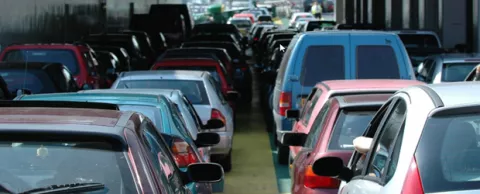
We envision smart transportation as a sustainable strategy. It will enable us to meet the needs of growing urban populations by using technology to reduce traffic congestion, reduce accidents and reduce air pollution — and to put the brakes on the proliferation of cars in cities. That last goal could be the most difficult to accomplish. So said experts sharing their thoughts on integrated transportation systems of the future and guiding policies during a panel discussion at the first Smart Cities Week held in Silicon Valley. They lay out the challenges in the story below. — Doug Peeples
For Tina Quigley, general manager for the Regional Transportation Commission of Southern Nevada, four of the top issues for her agency are autonomous vehicles, intelligent infrastructure, connected vehicles and shared mobility. And all of those elements are part of an integrated transportation system that includes multi-modal mass transit, high-speed rail – and they all ideally work seamlessly together.
But as she and other panelists warned: at the rate we’re going now, the technology will be here before the policy that regulates it has been created.
So, how far along are cities in their efforts to develop policies that will guide how cities accommodate and prepare for autonomous vehicles, for example? "I'd say most cities are nowhere as far as policy is concerned," commented Melanie Nutter, whose consultancy frequently works on smart cities projects. She outlined the areas autonomous vehicle policy should focus on first:
- Parking
- Pedestrian safety
- Roadways
- Speed limits
Those areas are, of course, challenging in their own right. But the even bigger challenge could be how to persuade citizens to dramatically change how they think of mobility. As panel moderator Regina Hopper put it, "What do we need to do to with the 'culture of the car' to make way for integrated mobility?" Hopper, president and CEO of the Intelligent Transportation Society of America was referring to the decades-long love affair Americans have had with their cars.
And, there's another wrinkle…
If you plan to move people to other modes of transportation, they had better be an improvement over what they're doing now. "If you can make all those options convenient and seamless people will be more likely to use them," said Andrew Fremier, deputy executive director of the Bay Area Metropolitan Transportation Commission. He also noted that the state of California links transportation and housing policy.
Nutter, who recently worked on a report for the city of Los Angeles, said that among the recommendations for the city were that it manage assets for transportation options like biking and walking and not for cars.
Other suggestions from panelists involved cities negotiating data sharing with their technology partners –data cities wouldn't otherwise have that could help them plan. Another was focusing shared mobility outreach and education programs on children rather than adults and younger citizens who are already driving.
And another thing: the panelists generally agreed that policy makers should realize transportation sustainability isn't the big driver for citizens because most are more concerned with availability and convenience in getting from A to B. But sustainability really should be a big issue for policy makers designing smart transportation networks.



